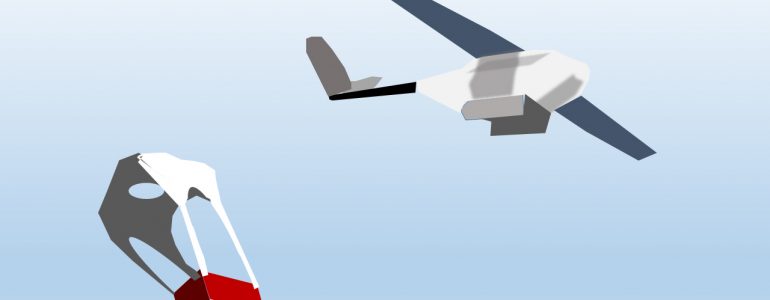Here is a short video that captures the main ideas of this blog post:
Delivering emergency medical services in Rwanda presents a number of challenges. Not least among them is the logistics involved in operating a delivery system for critical supplies necessary to support care. For example, hospitals capable of providing transfusions can maintain only a limited supply of the most common blood types. A hospital in Kabgayi that needed blood products would have to plan several trips each week to the distribution center in the capital, Kigali, to maintain a supply of the perishable and much needed blood. Every supply trip would mean a 3 to 4-hour round trip drive over rough roads.
In emergencies, which created critical demand spikes, patients were often sent to the hospital in Kigali rather than risking a wait on a replenishment run for the blood needed in their treatment. This was hard on patients with emergencies like post-birth hemorrhaging who needed blood immediately and whose condition could easily be worsened by the trip. Emergencies in some areas were simply impossible to treat because of the logistics involved in getting the needed supplies to the patient.
In a country like Rwanda, which lacks the means to address the condition of the infrastructure (build better roads or more health centers), the systemic solution had to be creative. An American company, Zipline, became aware of the problem while searching for a way in which the emergent drone technology could have a serious impact on significant problems. Their drive to implement the fruits of their creativity made them a perfect candidate to confront the Rwandan challenge.
They began with the problem of distributing blood products to address critical needs. The response time from the appearance of the need for blood to its delivery was short. Zipline set to work designing a drone system that could replace the motor vehicle delivery system with a speedy airborne response. Instead of the more common multi-copter drones, Zipline opted for a fixed-wing model that would offer a greater range and better foul weather performance.
For drone transport, the blood, contained in its familiar plastic “sachets,” is packed into a cardboard shoebox-sized container for transport and is dropped onto a preplanned delivery point using a wax paper parachute to slow its descent. The delivery points and routes are mapped in detail using a 3-D satellite map and follow-up ground surveys. This allows for the accuracy that assures the blood reaches its destination without being marooned in trees or on rooftops.
Launched from one of two hilltop bungee-powered aluminum catapults, the drones are monitored in flight from a laptop. They drop their payload at the destination within 5 meters of a defined exact spot. The medical staff then retrieves the blood, usually within 15 minutes of the placement of their order via cellphone text.
In starting the service, Zipline chose to serve Kabgayi first and to limit their cargo to blood products. Kabgayi is relatively close, simplifying logistical problems in making the flights, and at the same time having a history of significant need for blood deliveries. There are plans in place to scale up the service, reaching more remote sites while at the same time expanding deliveries to include other commodities including emergency medicine.
Problems remain, to be sure. Blood and medicine aren’t the only shortages impacting Rwandan health care. Qualified medical personnel are scarce as well. The government is tightly authoritarian, and there is little dialog around the allocation of resources to other pressing needs such as ambulances and medical equipment.
The systems engineering aspects of this story are abundant and, to some degree, not instantly apparent. The initial problem-solving and drone system design are obvious subjects of systems engineering. But other areas carry systems challenges as well. The delivery flight routes had to be surveyed in detail. The supply center had to be sited for optimal distribution efficiency. The products to be delivered and the roadmap to scaling up the offerings and service areas still have to be chosen systemically. Political and socio-economic problems remain to be addressed.
Meeting these challenges requires thinking in the framework of meeting their inherent requirements with behavior from a system designed to deliver the corresponding functionality. It is obvious that systems engineering is involved in specifying and building the drones, their tracking, and launch systems. But creating the network of delivery sites, choosing the payloads, and navigating the political pathways to realizing the service on a broad scale are all areas that require systems work as well. The big impediment in those areas is to recognizing them as legitimate fields of opportunity for systems engineers.
The mix of medical, social and political problems demonstrates well the complexity and interrelatedness of the problems facing systems engineers in the 21st century. None of these problems can be truly solved without addressing the others. A perfectly satisfactory medical solution could easily collapse under the weight of unsolved political problems. “Here’s a great drone. It flies long distances with heavy loads. I hope it helps,” isn’t an acceptable answer to the real problem. Recognizing that systems engineering can, and should, address the whole package is key to stepping up to the challenge in Rwanda and the rest of the world.






